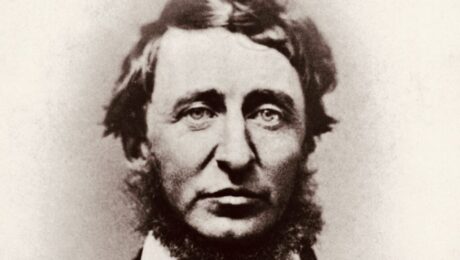How to Consult Your Destiny Via Thoreau’s Walden
Tuesday, January 07 2025
During a long life of hard reading, Henry David Thoreau’s Walden is the book that helps me understand what it is to be human.
- Published in Books
Reading Walden and Wrestling With Thoreau
Tuesday, December 31 2024
As I look to the start of the new year, Thoreau’s 1854 classic, Walden, still deeply challenges and inspires me.
- Published in Features
Reading Charles Dickens for Christmas — Have Desk Will Travel
Tuesday, December 17 2024
Clay does a special public reading from the works of his favorite English Novelist, Charles Dickens.
- Published in Dispatches from the Road
A Visit to Medgar Evers’ Home — Video Dispatch
Tuesday, November 19 2024
Clay visits Medgar Evers’ home, now a national monument. Medgar Evers was killed by a white supremacist here, in front of his house, on June 12, 1963.
- Published in Dispatches from the Road
Reports of the Book’s Demise are Greatly Exaggerated
Tuesday, October 22 2024
A stop at a West Texas Barnes & Noble persuades Clay that books remain alive and kicking.
- Published in Features
John Steinbeck: The Journals of a Novelist
Tuesday, October 08 2024
Two journals John Steinbeck kept while writing his two most famous novels provide an intimate look into the author’s creative process.
- Published in Features
Interstellar News From NASA
Tuesday, August 27 2024
Apparently lost and 15 billion miles from Earth, NASA’s Voyager 1 calls home.
- Published in Features
Uniquely American Concord, Massachusetts — Video Dispatch
Monday, August 19 2024
Clay spent a morning in Concord, Massachusetts, while traveling through New England this spring. Located northeast of Boston, Concord has deep roots in American history and culture.
- Published in Dispatches from the Road
Patricia Limerick and George Orwell on Stage!
Tuesday, August 06 2024
Clay will join noted author and MacArthur Awardee Patricia Limerick at the Vail Symposium in Colorado on August 21 to discuss George Orwell’s novel 1984.
- Published in Features
The Best John Steinbeck Biographies, Part II
Friday, July 12 2024
Russ Eagle builds on his previous list of John Steinbeck biographies by looking at works that focus on specific relationships and periods in the author’s life.
- Published in Books










